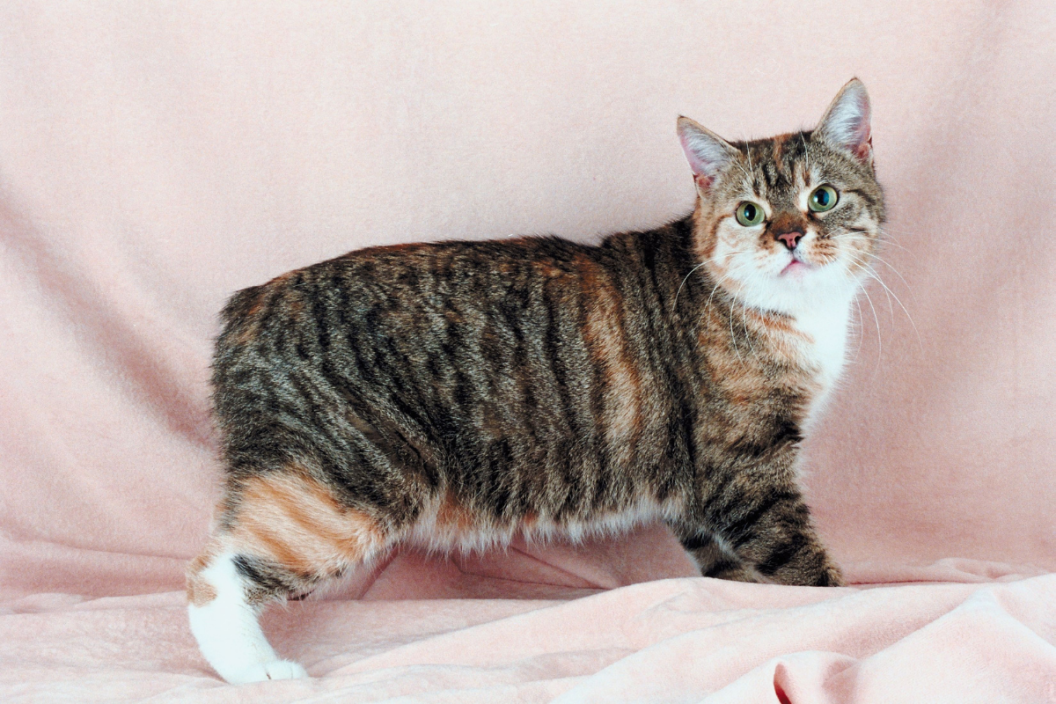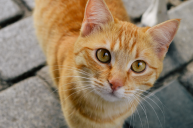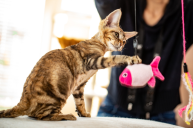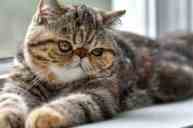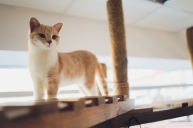Pet owners wanting a unique cat may want to get a Manx cat.
If you're looking for a beautiful, friendly, and distinctive-looking cat, then you need to look into the Manx breed. Manx cats are native to the Isle of Man (a.k.a. Manx), located between England and Ireland. This breed looks like a cat but it's missing a normal length tail! While the breed is most often known for this physical characteristic, Manx cats have much more to offer with their dog-like personalities and friendly attitudes.
The shortened tail is a naturally occurring mutation (a Manx gene) and there are a few different tail types and varieties. The Manx cat is not completely tailless with some of them having a variation of a partial tail. There are Rumpies, which have up to three vertebrae fused at the end of the spine to make a short tail. Rumpy Risers have a rise of bone up to five vertebrae, and then some Manx cats are known as Longies since they have a tail that's longer than the stump but shorter than the typical cat tail length.
History of the Manx Cat
https://www.instagram.com/p/VZk9uANNW1/
RELATED: 5 Ways to Improve Your Cat's Quality of Life
The Manx began as mousers hunting and finding prey on the Isle of Man. The tailless gene is said to have come from the island's shorthair population and the long-hair came around the time of the Vikings when the genes mixed with a separate breed that the Cat Fanciers Association considers to be related to Norwegian Forest Cats. Interestingly enough, the pedigreed cat is one of the first recognized by the CFA when it was founded in 1908. The tailless Manx is a famous cat! It's also found on postage stamps and featured on four commemorative coins in Britain.
And this breed has been around for a long time. According to the BBC:
"Isle of Man resident Sara Goodwins, author of the book 'A De-tailed Account of Manx Cats,' notes that the first linguistic reference to tailless cats on the Isle of Man appears in the mid-18th Century."
This spontaneous tailless genetic mutation occurred many centuries ago. According to one story, the Manx cat taillessness was a result of a cross between a cat and a rabbit. There's even a myth that the Manx cat was attempting to board Noah's Ark when Noah closed the door on its tail...There's also a tale of a Spanish Armada shipwreck in the Irish Sea, and a tailless cat swam to the island of Man.
If the tail is too short it can affect the length of the spine (Manx syndrome) and health complications can arise, like spina bifida and problems with the bowels, bladder, and digestion. Two tailless Manxes bred together will lead to birth defects, which is why there are different types of Manx cats.
Characteristics
Manx cats have a round appearance and weigh 8-12 pounds. North America now has far more of this tailless cat than its original birthplace.
There are two types of Manx coat lengths: shorthair and longhair (formerly Cymric). The shorthair's double coat (one of the few shorthair cats that have a double coat) is glossy and padded, while the long-haired Manx has a silky and plush double coat. Color and varieties include white, black, calico, brown spotted, tortoiseshell, silver tabby, and black-tipped.
They are known for their round heads, broad chests, and round eyes. Of course, their most distinctive feature is their lack of a tail. They appear to hop around rather than walk due to their elongated hind legs. Certain health problems these cats are prone to include rump fold intertrigo, and corneal dystrophy. Some of their health issues can also be attributed to the dominant gene that creates their stubby tails. If the tail is too short, it can cause spinal cord damage and health problems resembling Spina Bifida.
Make sure your Manx has cat food that provides them with plenty of nutrients and a balanced diet. Manx cats have a lifespan of 10-14 years which is typical for most cats.
Behavior
Manx cats have been known to act more like dogs than they do cats. They are very social with people and easily bond with other animals, including your dog! The Manx is a playful, happy cat that enjoys curling up in your lap, but it's important to socialize Manx kittens at an early age. They tend to follow you around!
They can learn to walk on a leash and enjoy riding in the car. This cat breed will accept boundaries but you may need to redirect his behavior with a fun game if there is unwanted behavior like jumping on the counter. They can also be taught to open doors and other new skills.
Do you have a Manx? Show us on our Wide Open Pets Instagram or use the tag #WideOpenPets for a chance to be featured!
READ MORE: Rare Cat Breeds: From Hairless to Curly and Exotic
